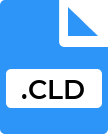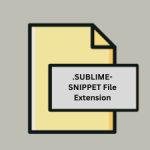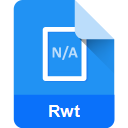.CLD File Extension

Canon CD Label Template
| Developer | Canon |
| Popularity | |
| Category | Page Layout Files |
| Format | .CLD |
| Cross Platform | Update Soon |
What is an CLD file?
.CLD files, short for Canon CD Label files, are specific file formats used for storing label designs created with Canon CD LabelPrint software. These files contain graphical and textual information necessary for printing labels onto CDs and DVDs using Canon printers. They typically store layout, formatting, and design elements such as text, images, and background colors.
More Information.
The creation of .CLD files can be traced back to the development of Canon CD LabelPrint software, which was likely introduced to complement Canon’s range of printers capable of printing directly onto CDs and DVDs. The primary purpose of .CLD files is to enable users to design and print customized labels for their optical media, offering a convenient solution for personal and professional use.
Origin Of This File.
The .CLD file extension is closely associated with Canon, a renowned manufacturer of imaging and optical products. Canon CD LabelPrint software was developed to provide users with an easy-to-use tool for creating custom labels for CDs and DVDs. As a result, .CLD files became the standard file format for saving label designs created within this software.
File Structure Technical Specification.
.CLD files are structured to store various elements of label designs, including text, images, shapes, and formatting properties. While the exact technical specifications may vary based on the version of Canon CD LabelPrint software, .CLD files typically use a proprietary format optimized for efficient storage and retrieval of label design data. The files may include metadata to describe the layout and properties of the label design elements.
How to Convert the File?
Windows:
- Using Canon CD LabelPrint Software:
- Install Canon CD LabelPrint software on your Windows computer if you haven’t already.
- Open the software and load the .CLD file you want to convert.
- Make any necessary adjustments or edits to the label design.
- Go to the “File” menu and choose the option to save or export the file in your desired format, such as PDF or image formats like JPEG or PNG.
- Using Online Conversion Tools:
- Alternatively, you can use online file conversion tools that support converting .CLD files to other formats.
- Visit a reputable online file conversion website.
- Upload your .CLD file to the website.
- Choose the desired output format (e.g., PDF, JPEG, PNG).
- Follow the on-screen instructions to complete the conversion process.
- Download the converted file to your computer.
Linux:
Currently, there is no native support for Canon CD LabelPrint software on Linux.
However, you can explore the following options:
- Wine Compatibility Layer:
- Install Wine, a compatibility layer that allows running Windows applications on Linux.
- Download and install Canon CD LabelPrint using Wine.
- Follow the steps mentioned in the “How to Convert the File on Windows” section to convert .CLD files.
- Virtual Machine:
- Set up a virtual machine running Windows on your Linux system.
- Install Windows within the virtual machine environment.
- Install Canon CD LabelPrint software on the virtual machine.
- Use the software to open and convert .CLD files as described in the Windows section.
Mac:
Similar to Linux, there is no native support for Canon CD LabelPrint software on macOS.
However, you can try the following approaches:
- Wine or CrossOver:
- Use Wine or CrossOver, compatibility layers that allow running some Windows applications on macOS.
- Install either Wine or CrossOver.
- Install Canon CD LabelPrint using the chosen compatibility layer.
- Proceed with the steps outlined in the “How to Convert the File on Windows” section.
- Virtual Machine:
- Create a virtual machine running Windows on your Mac using software like Parallels Desktop, VMware Fusion, or VirtualBox.
- Install Windows within the virtual machine.
- Install Canon CD LabelPrint software and convert .CLD files within the virtual Windows environment following the Windows instructions.
Android and iOS:
Unfortunately, there are no direct methods for converting .CLD files on Android or iOS devices due to the lack of compatible software. These platforms do not support Canon CD LabelPrint software, and there are no equivalent alternatives available.
Therefore, you may need to transfer the .CLD files to a compatible computer system (Windows, Linux, or Mac) and use the methods mentioned above to convert them into other formats.
Advantages And Disadvantages.
Advantages:
- Easy creation of customized labels for CDs and DVDs.
- Integration with Canon printers for direct printing.
- User-friendly interface for designing labels.
- Support for various design elements such as text, images, and shapes.
Disadvantages:
- Limited compatibility with software other than Canon CD LabelPrint.
- Proprietary file format may restrict interoperability.
- Dependency on specific Canon printers for printing.
How to Open CLD?
Open In Windows
Use Canon CD LabelPrint software to open .CLD files on Windows.
Open In Linux
Utilize Wine compatibility layer or set up a virtual machine running Windows to open .CLD files on Linux.
Open In MAC
Employ Wine, CrossOver, or virtual machine with Windows to open .CLD files on Mac.
Open In Android
Transfer .CLD files to a Windows-compatible device for opening using Canon CD LabelPrint software.
Open In IOS
Transfer .CLD files to a Windows-compatible device for opening using Canon CD LabelPrint software.
Open in Others
No direct method available for opening .CLD files in other operating systems; consider conversion or emulation options.













